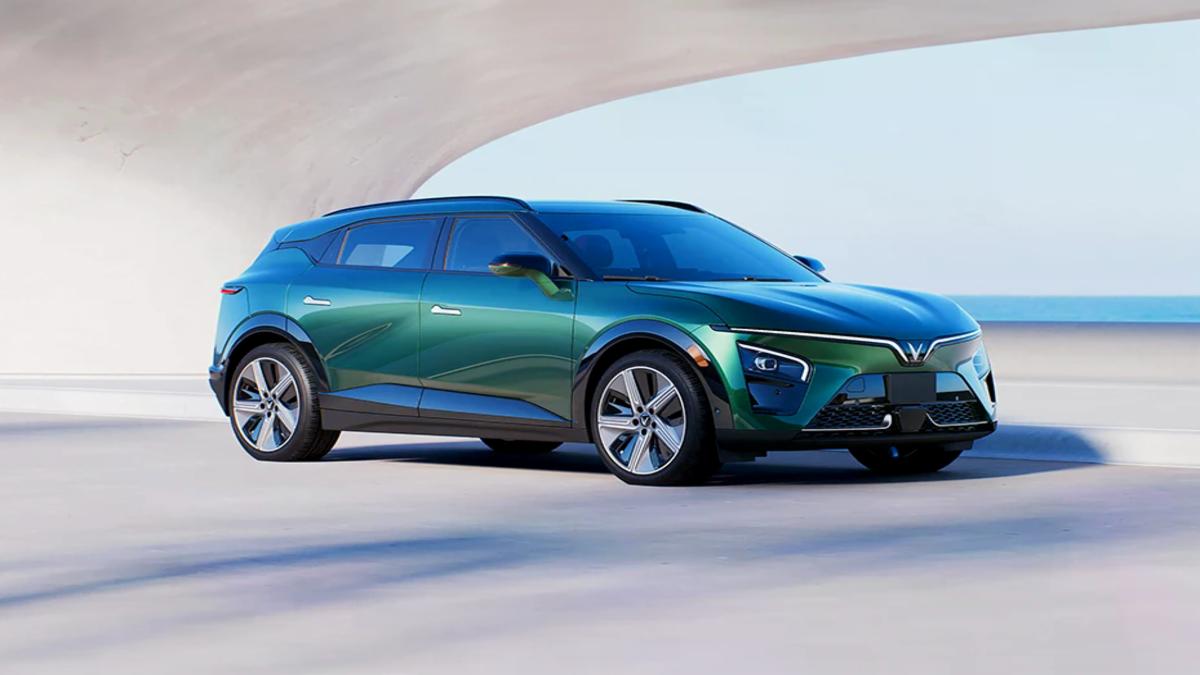Article Body
VinFast VF7 mileage & Fuel Efficiency: A Detailed 2025 Review
The VinFast VF7, a 2025 model electric SUV, is making waves in the EV market with its competitive mileage and fuel efficiency figures. Engineered with a sizable 75.3 kWh battery pack, the VF7 promises a driving range close to 450 kilometers, aligning closely with its WLTP and ARAI claims. This article dives deeply into its mileage, energy consumption, and what potential buyers can expect from this electric vehicle in real-world conditions.
VinFast VF7 Battery Capacity and Powertrain Options
The VF7 is equipped with a 75.3 kWh Lithium Iron Phosphate (LFP) battery, chosen for its stability and suitability to extreme weather conditions. Two powertrain options are available: a single motor front-wheel-drive (FWD) version delivering 201 horsepower (204 PS) and 310 Nm of torque, and a more powerful all-wheel-drive (AWD) dual motor variant producing 350 horsepower (353 PS) and 500 Nm of torque.
The single motor FWD variant offers the longest range, officially rated at around 450 kilometers per full charge, while the AWD setup provides a slightly reduced range of approximately 431 kilometers due to its higher performance output.
Mileage and Energy Efficiency Metrics
The VinFast VF7 yields an estimated mileage of about 5.98 kilometers per kWh in its FWD version, translating to efficient energy usage especially for a mid-sized SUV. This mileage figure means the vehicle travels nearly 6 kilometers on 1 unit of electrical energy, which is competitive with EVs in its segment.
Real-world usage data suggests slight variations in range, influenced by driving style, environmental factors, and air conditioning usage. The AWD system's more powerful motors require more energy, resulting in a slightly lower mileage of roughly 5.72 kilometers per kWh.
Charging and Range Considerations
The VF7 supports AC charging up to 7.2 kW and DC fast charging via CCS2 ports handling up to 100 kW, enabling a 10-70% recharge in about 26 minutes at optimal DC fast chargers. AC charging is ideal for overnight or workplace charging, replenishing the battery fully in under eight hours.
With a 70.8 kWh usable battery capacity (slightly below the gross 75.3 kWh), the VF7 suits daily commutes and longer journeys alike, offering peace of mind with a claimed range suitable for both city driving and highway trips.
Comparison to Segment Rivals
Compared to competitors like the Mahindra XEV 9e, Tata Harrier EV, and BYD Atto 3, the VF7's mileage and range are strong selling points in its price bracket. The VF7’s use of an LFP battery, rather than the more common Nickel-Manganese-Cobalt chemistry, enhances battery stability, longevity, and safety, especially important in India’s hot climate.
While the VF7 does not boast the highest WLTP mileage rating globally, its efficient powertrain and large battery help it offer a well-rounded package with strong performance without compromising on electric range.
Fuel Efficiency and Environmental Impact
As a fully electric vehicle, the VinFast VF7 eliminates tailpipe emissions and dependence on fossil fuels, significantly reducing environmental impact compared to internal combustion SUVs. Its efficient energy use and regenerative braking features (in higher trims) further enhance overall fuel economy by recovering energy during deceleration.
Purchasers can benefit from reduced operating costs and potential government incentives available for electric vehicles in many markets.
Conclusion
The VinFast VF7 stands out in the 2025 EV SUV market by offering a balanced combination of mileage, range, and powertrain variety. Its 75.3 kWh battery allows it to achieve an impressive 450 km range for the FWD variant and solid efficiency at close to 6 km per kWh. The AWD option provides more performance with slightly less range, appealing to those valuing power alongside mileage.
With rapid charging capabilities, robust battery technology, and competitive range figures, the VF7 is well-positioned for urban and suburban drivers seeking efficiency and reliability in an electric SUV.


Comments